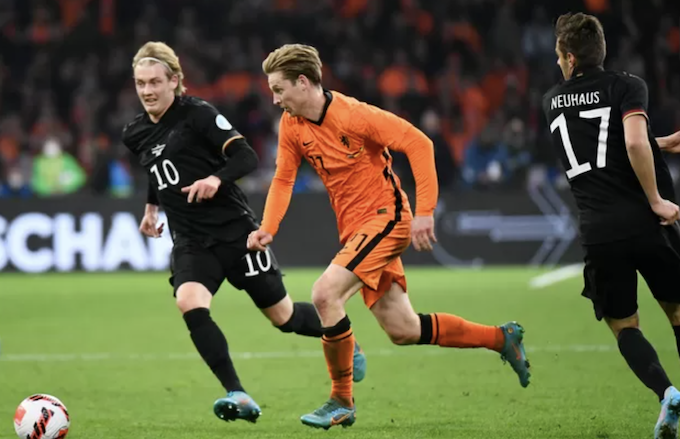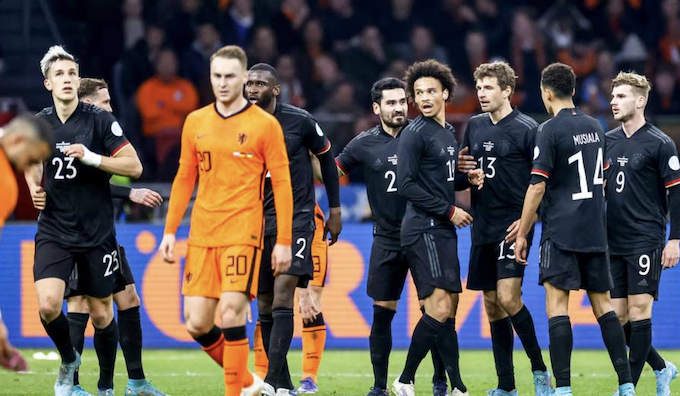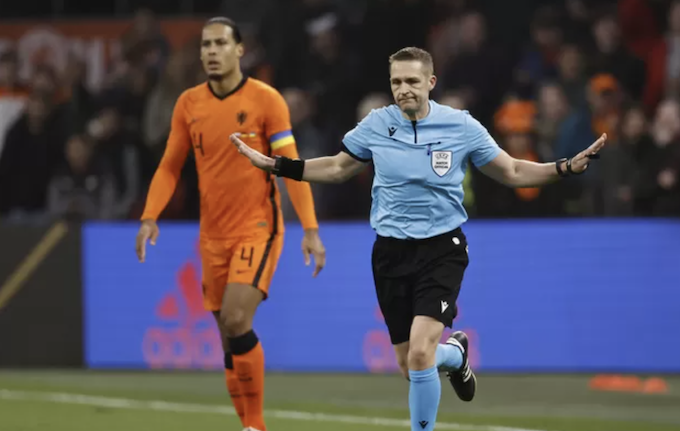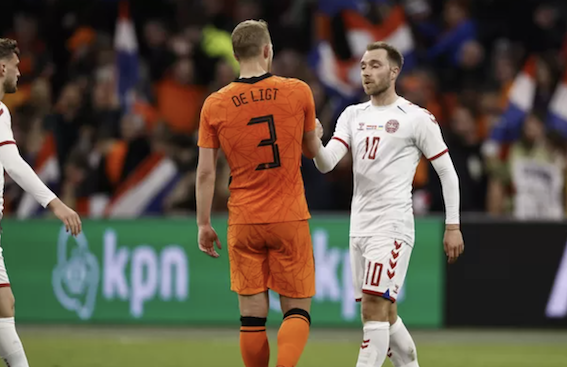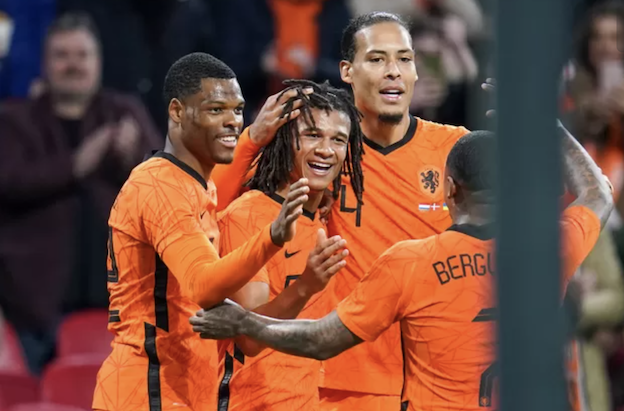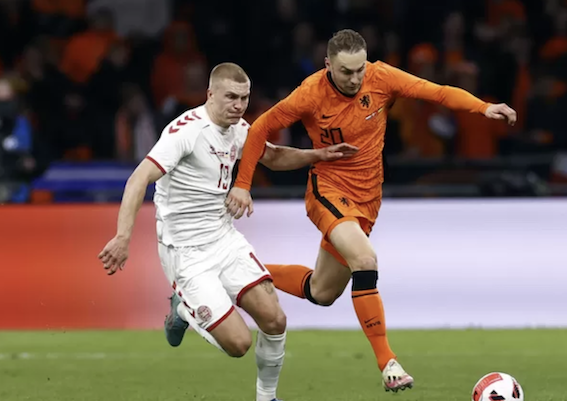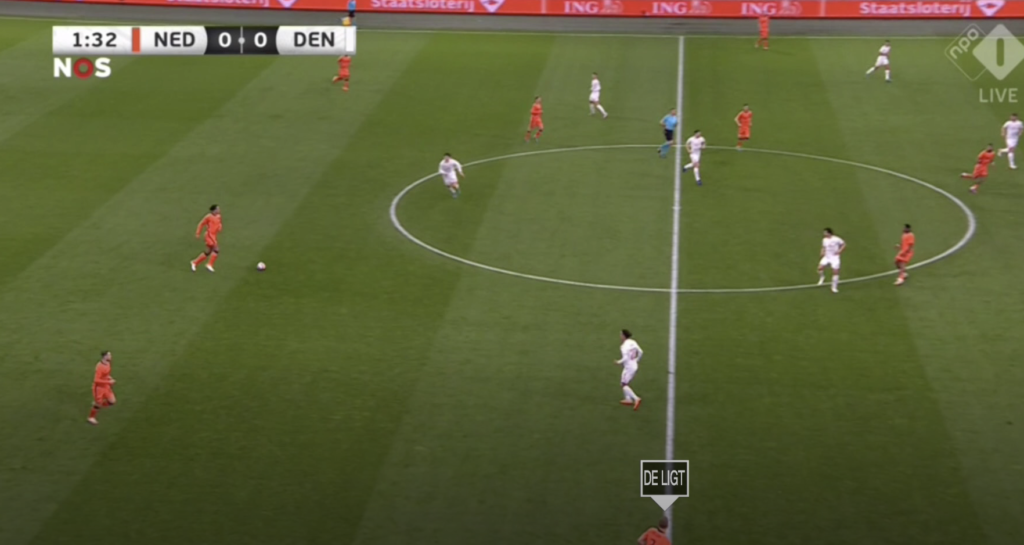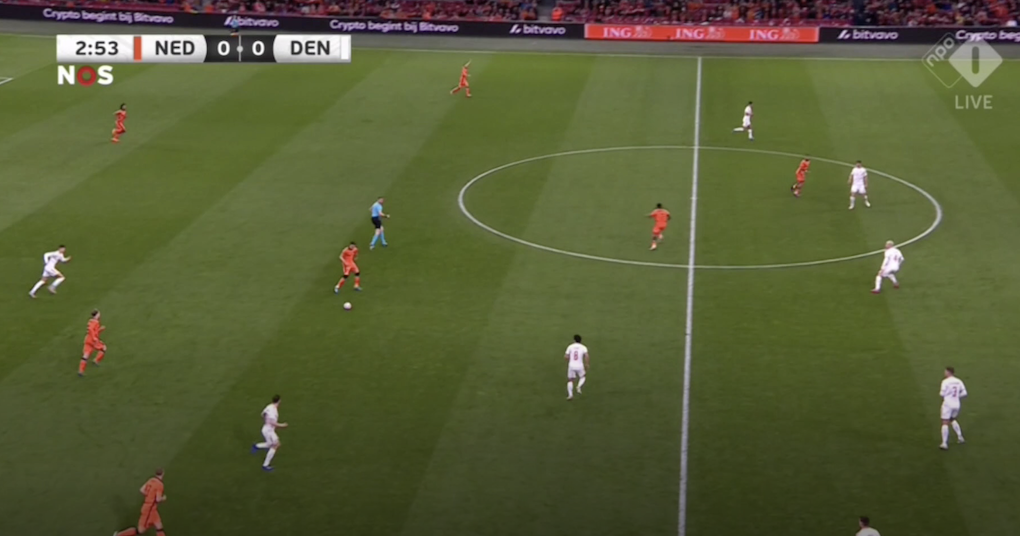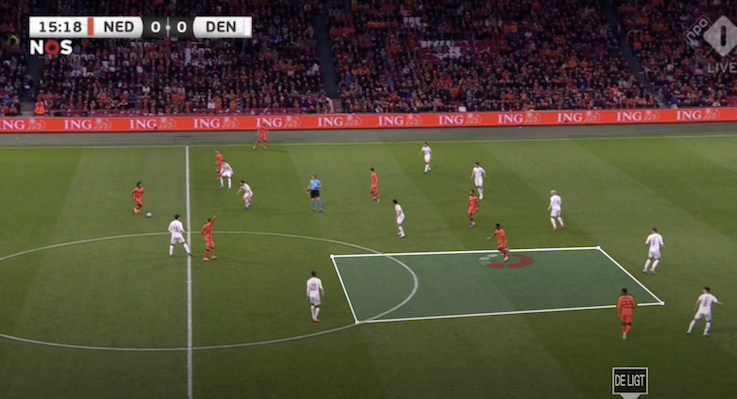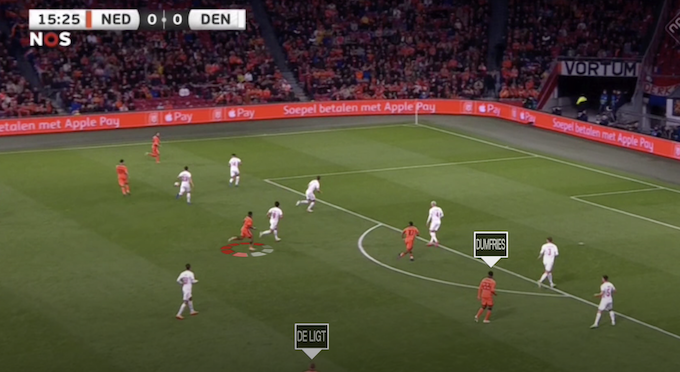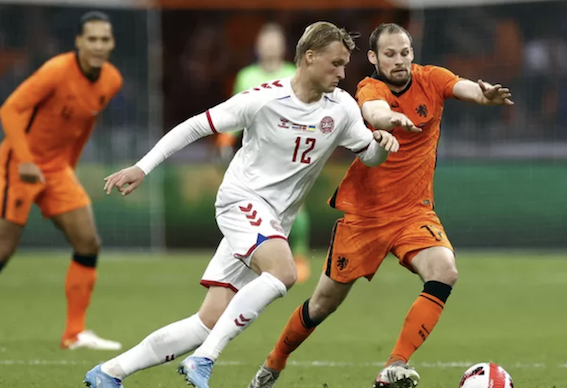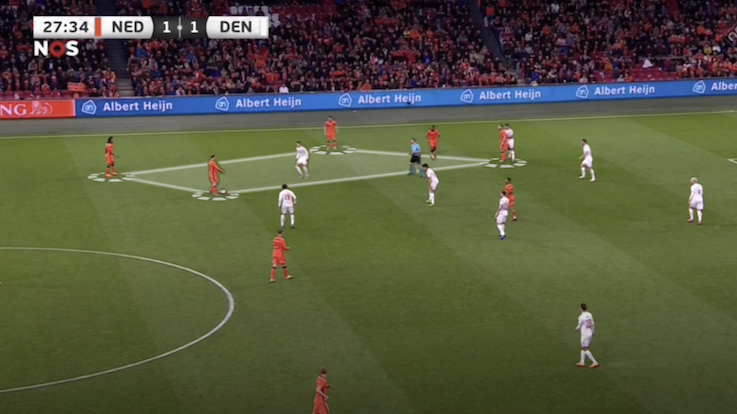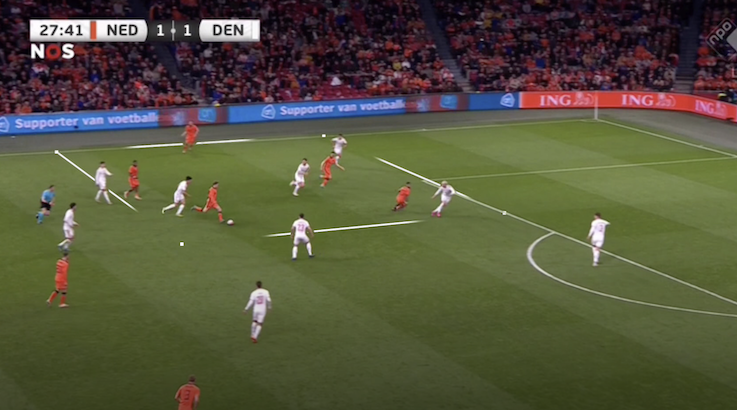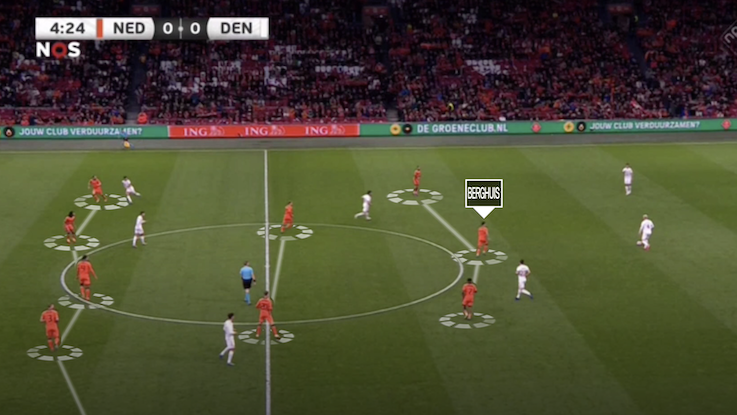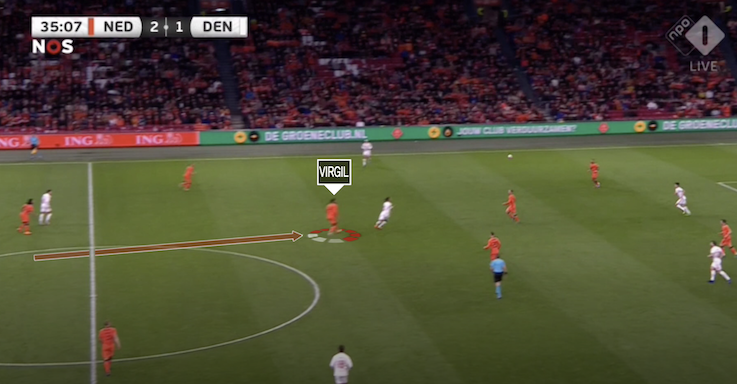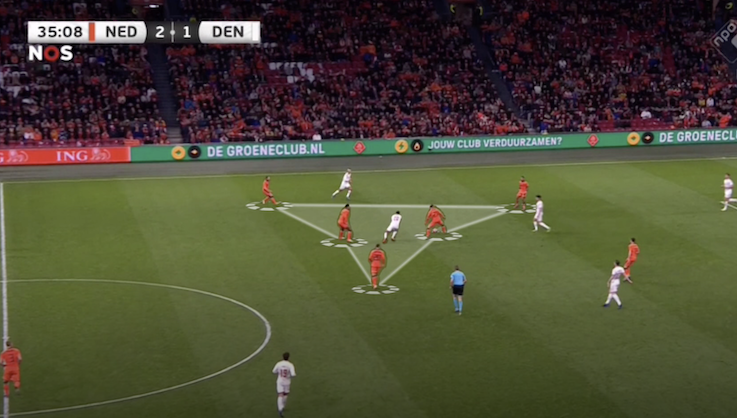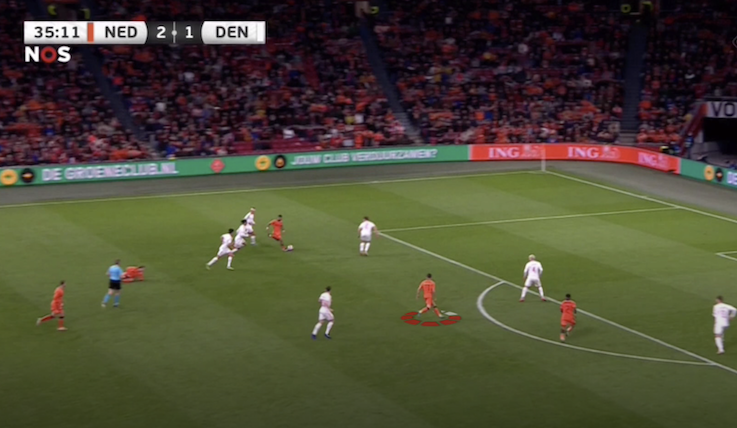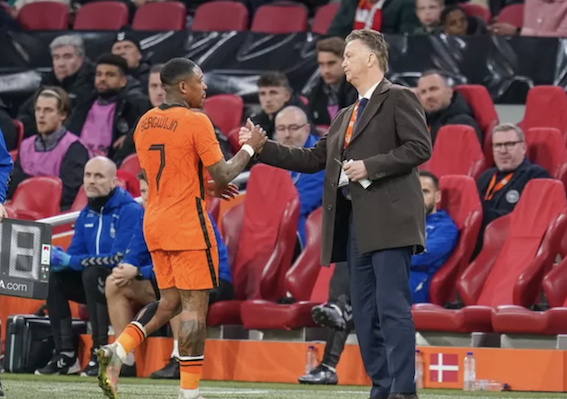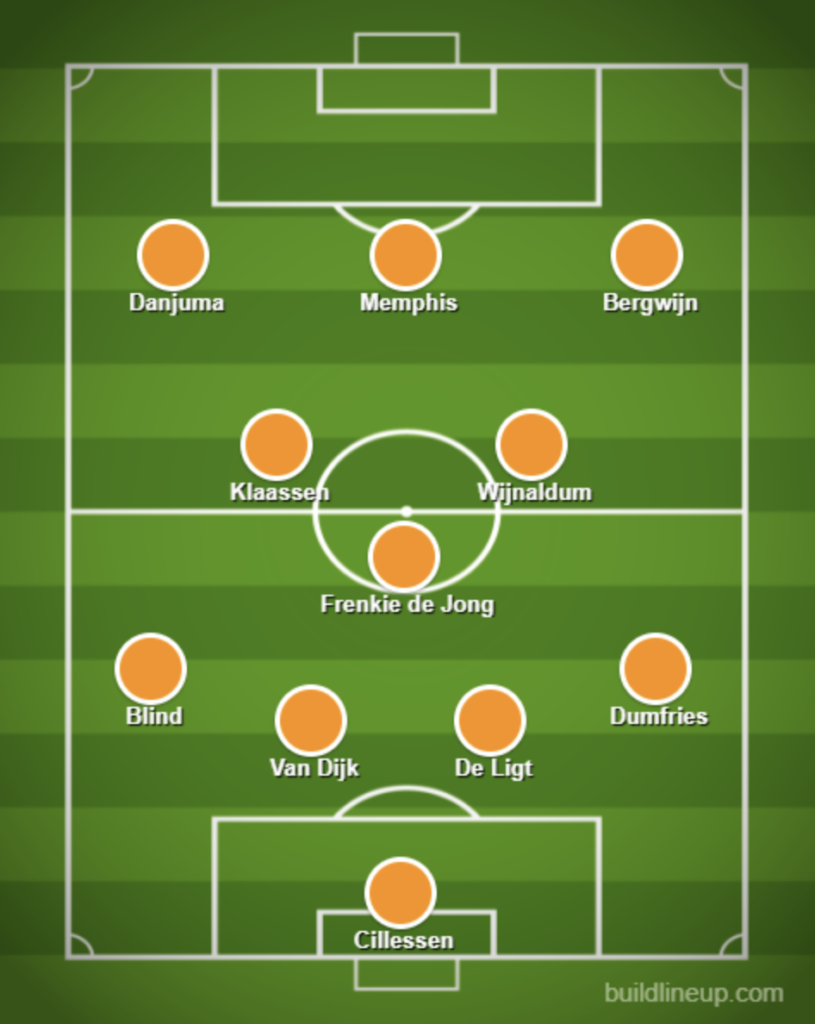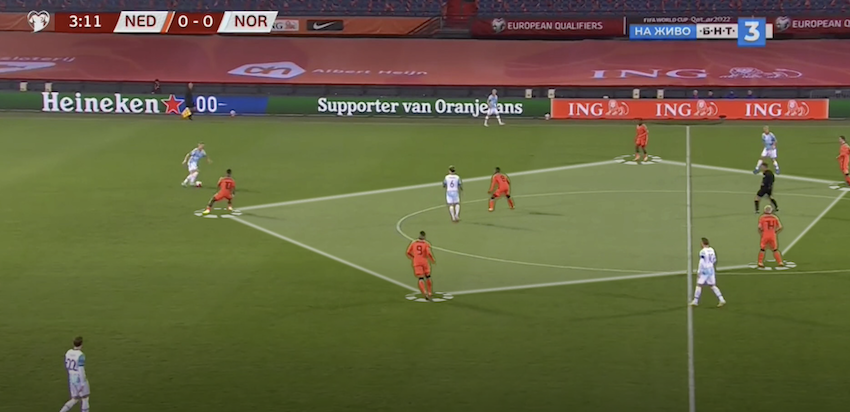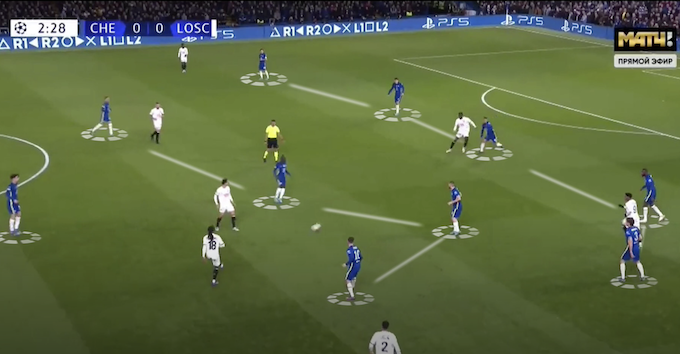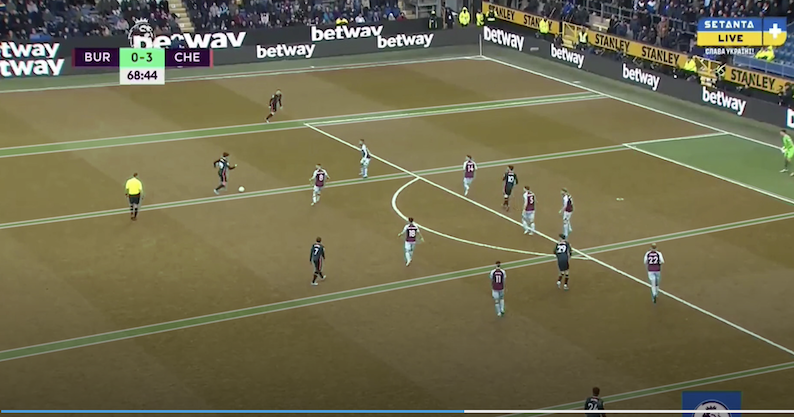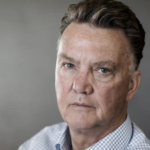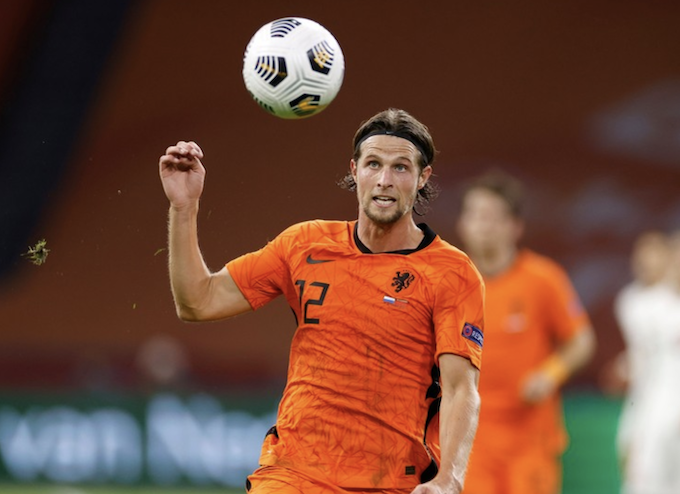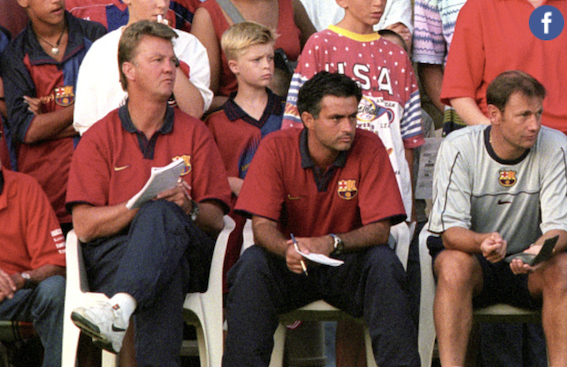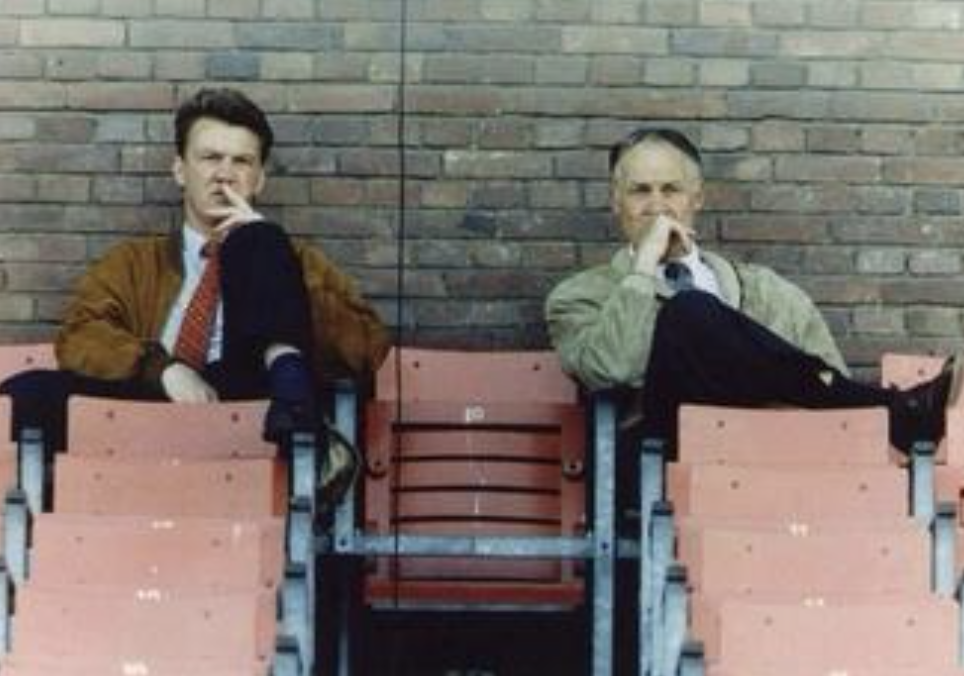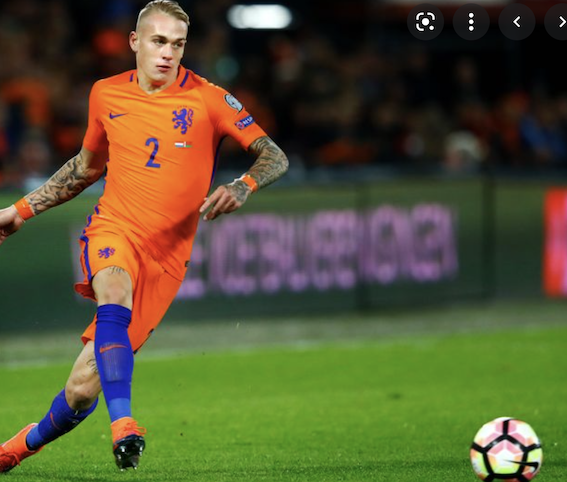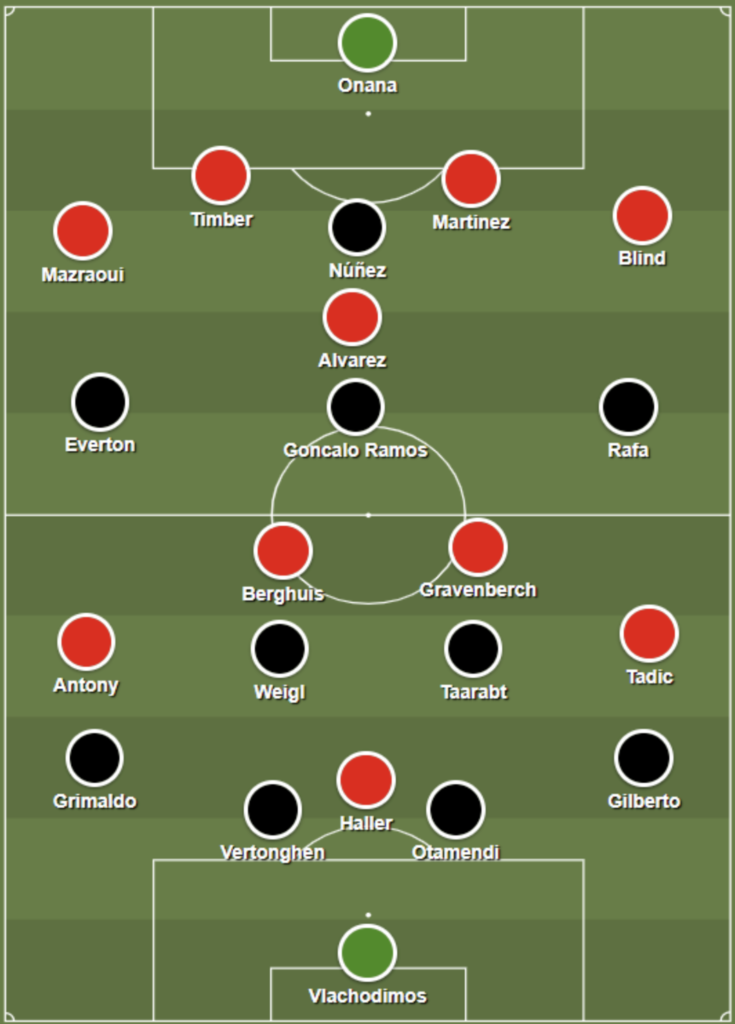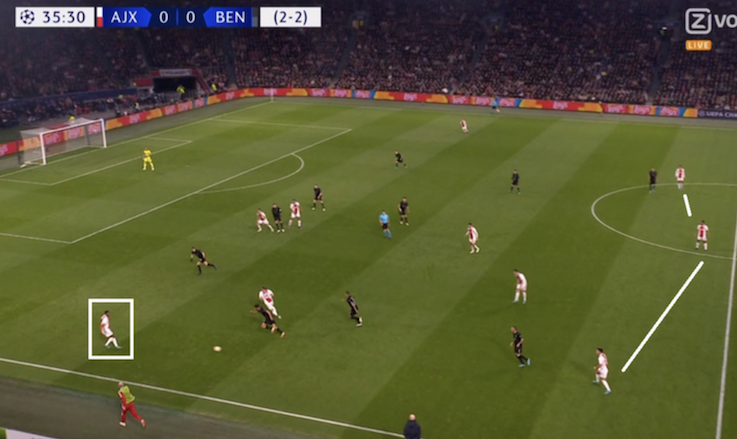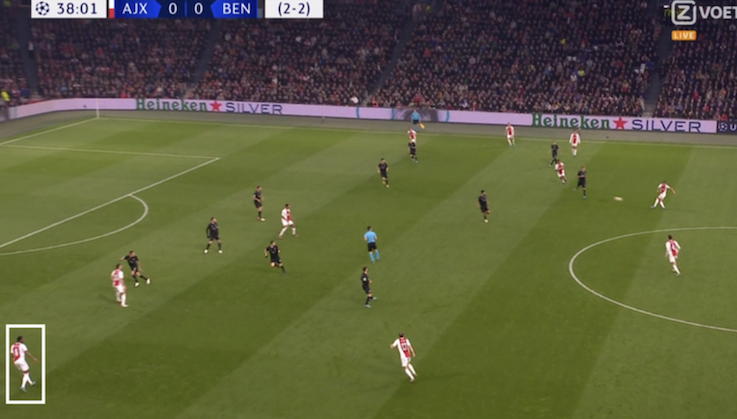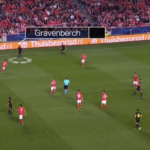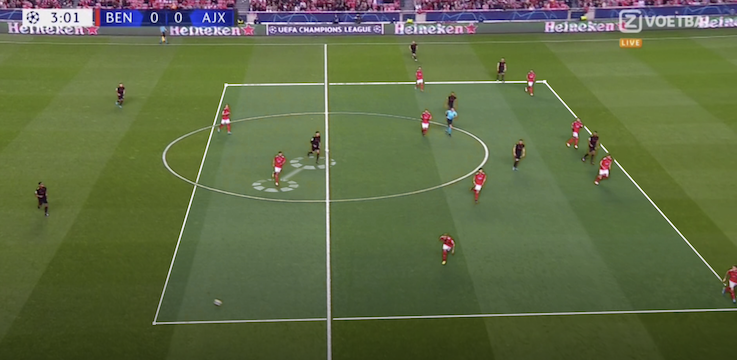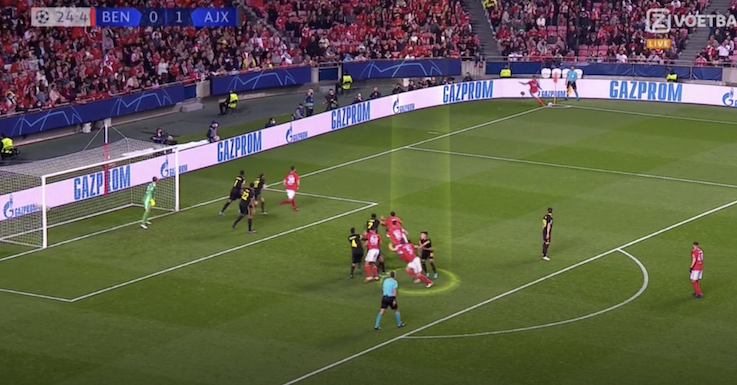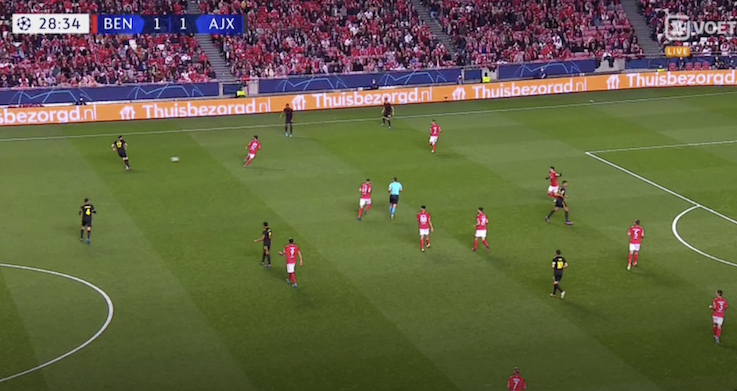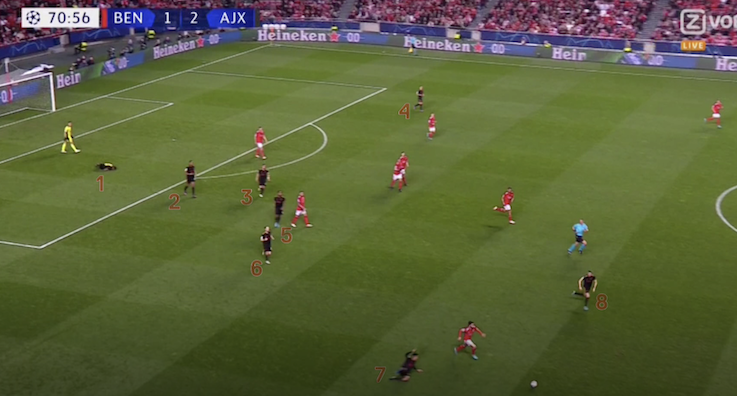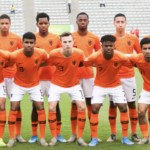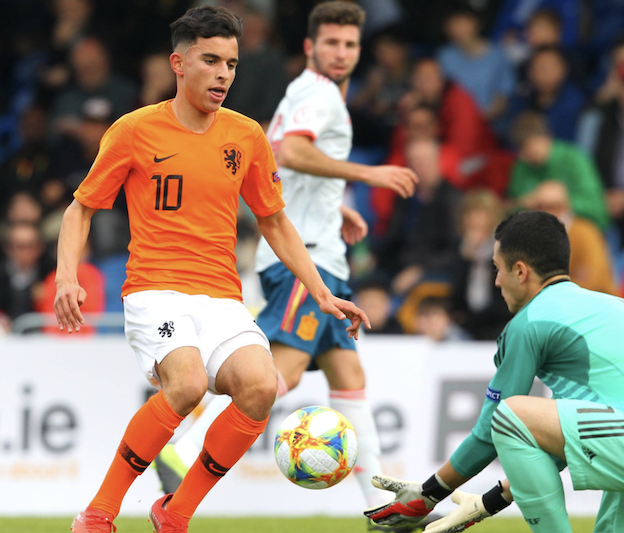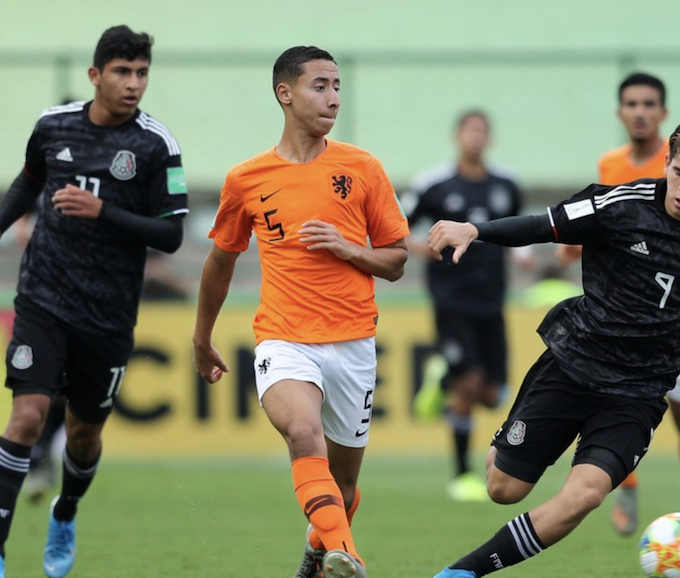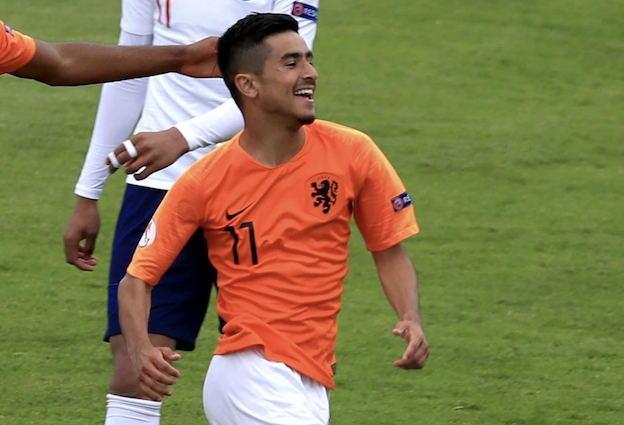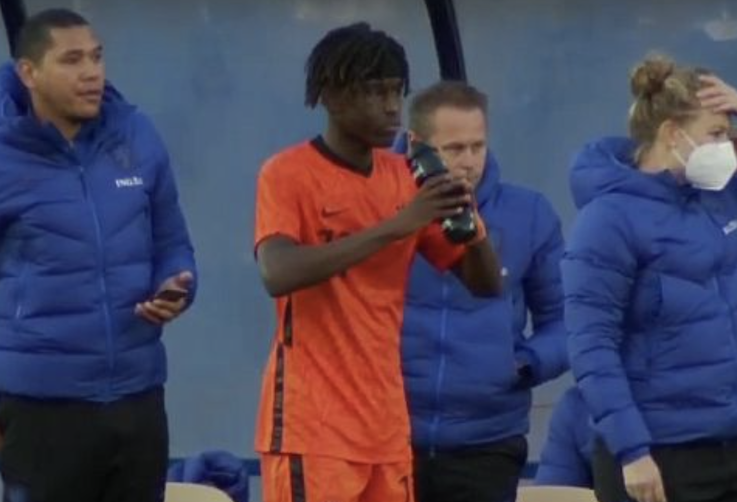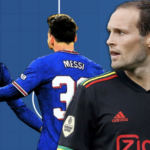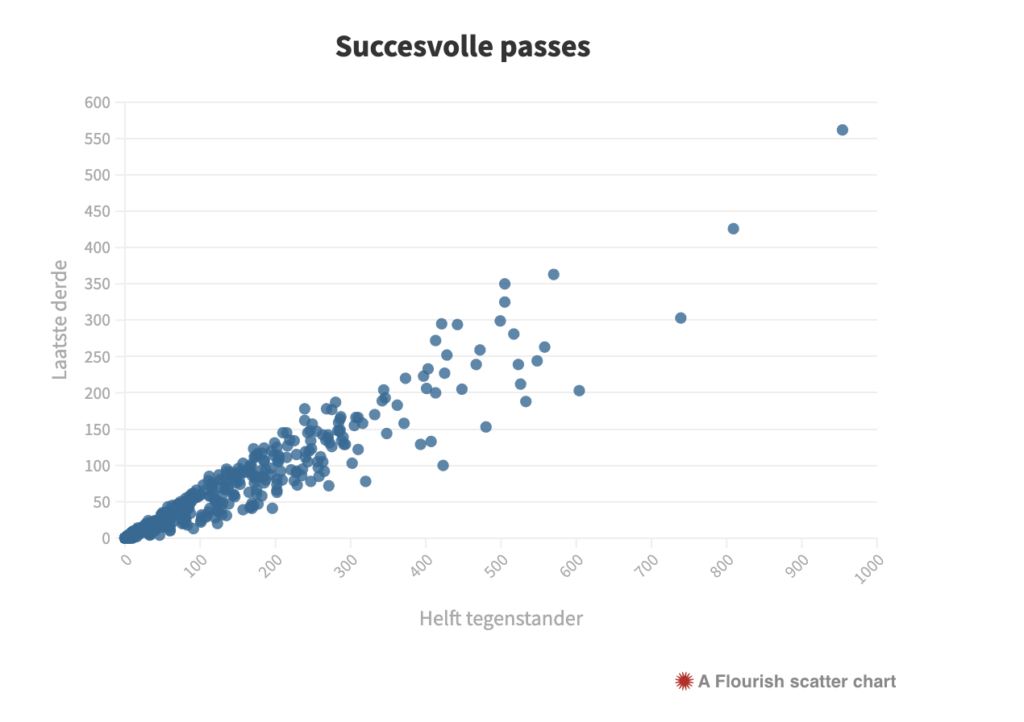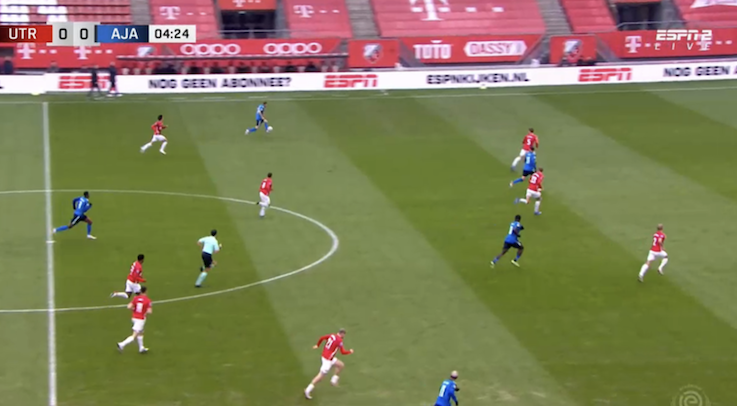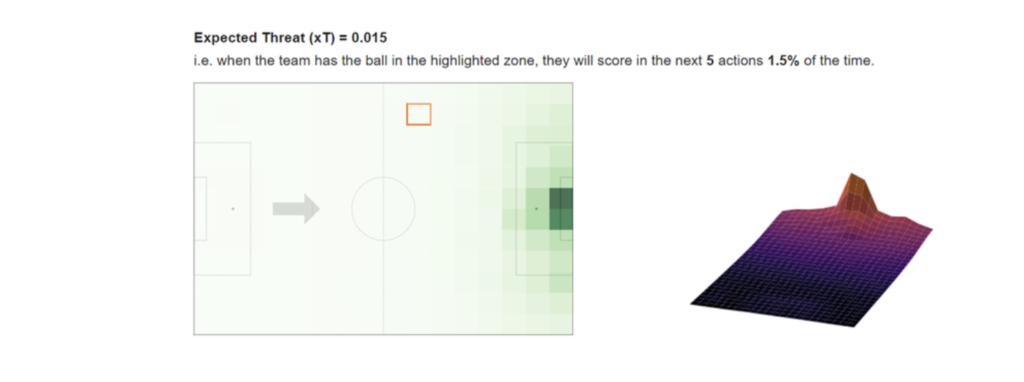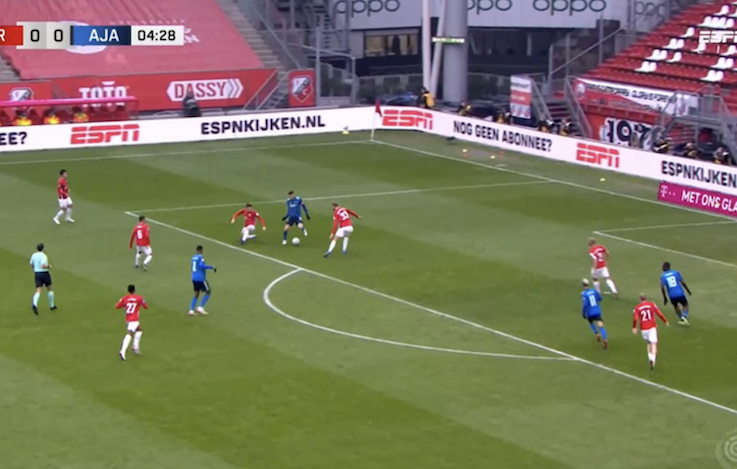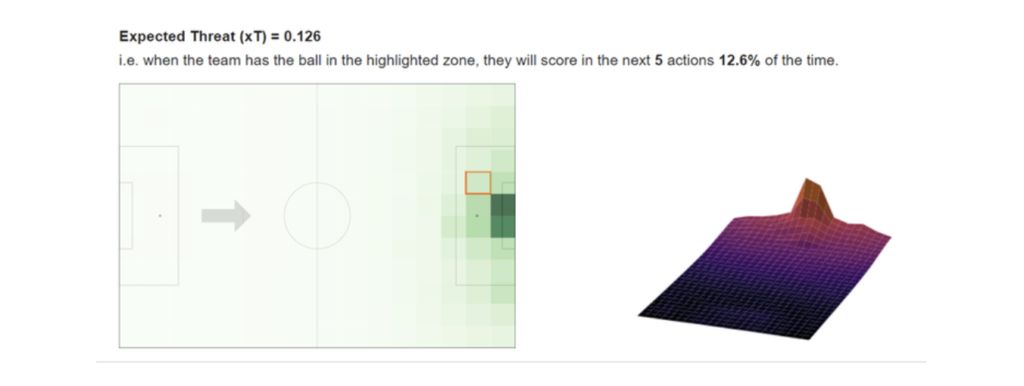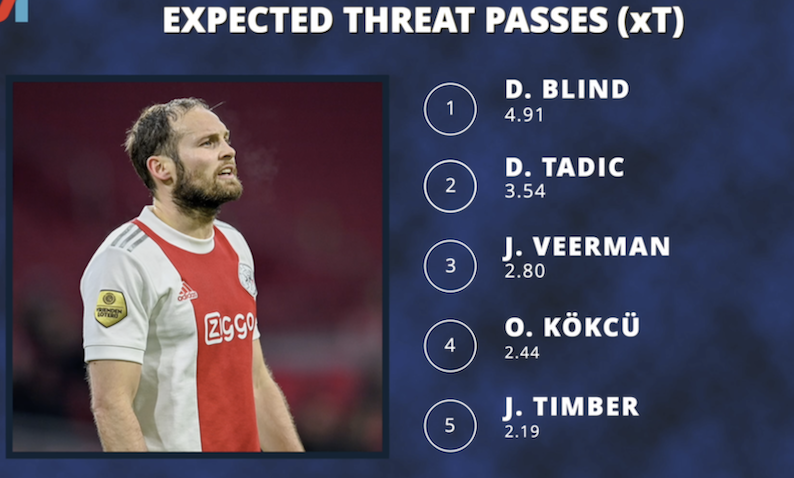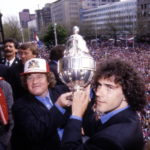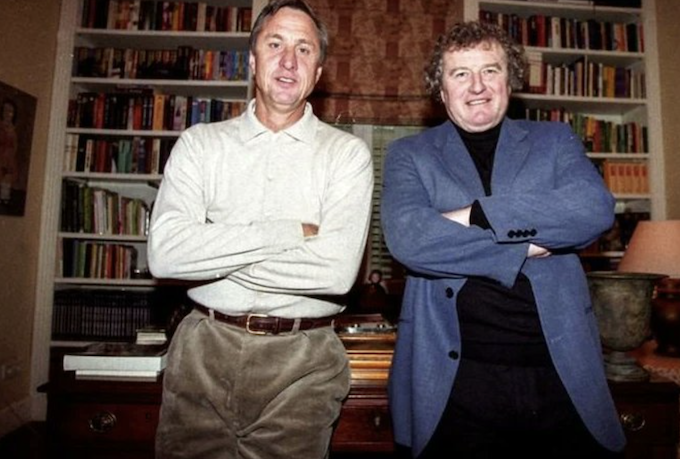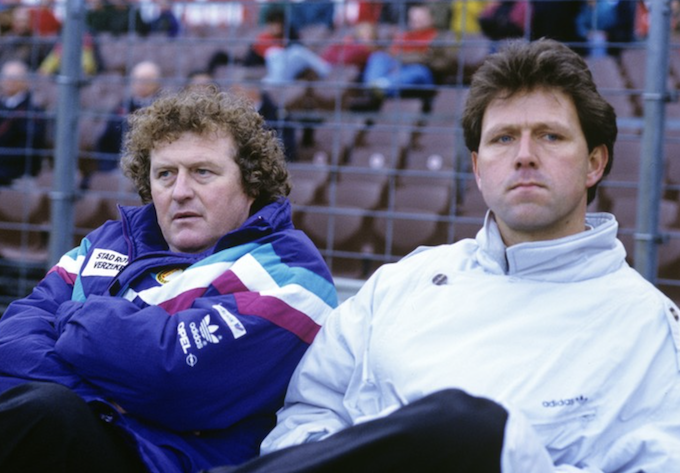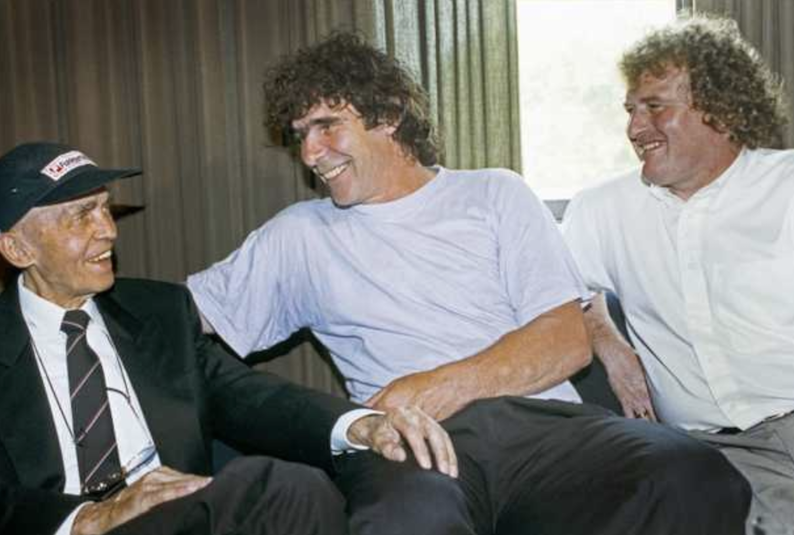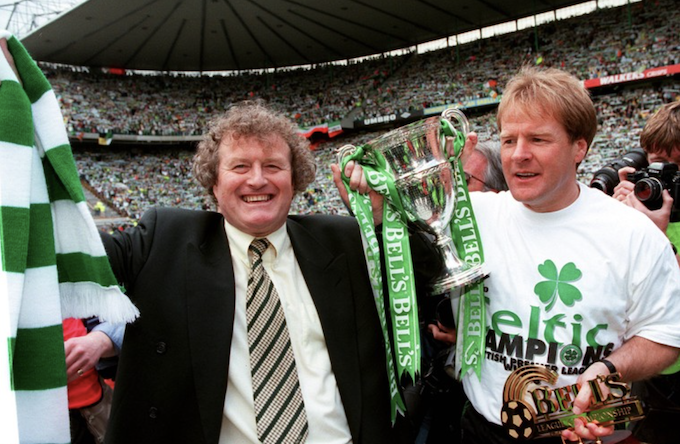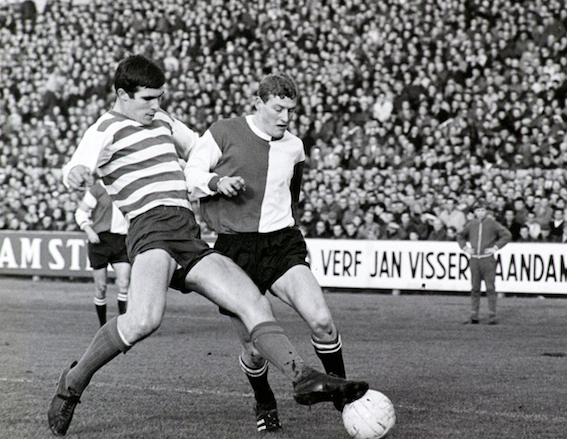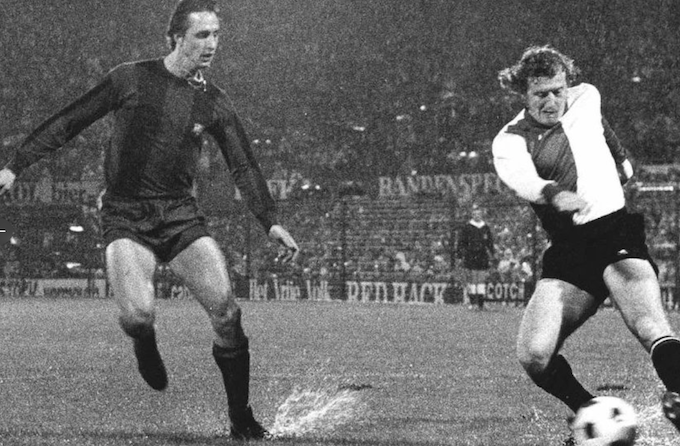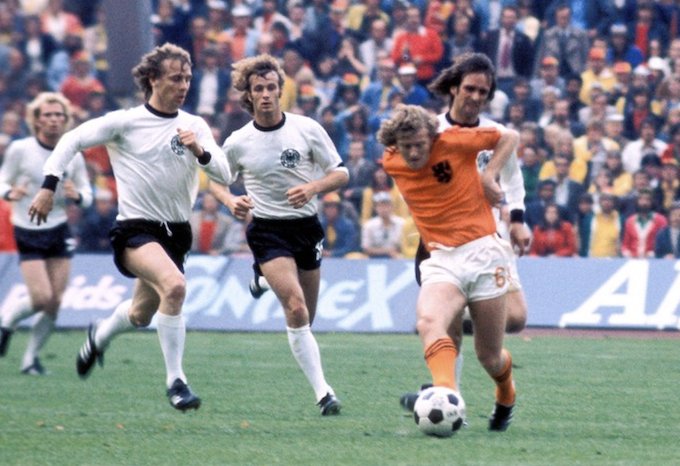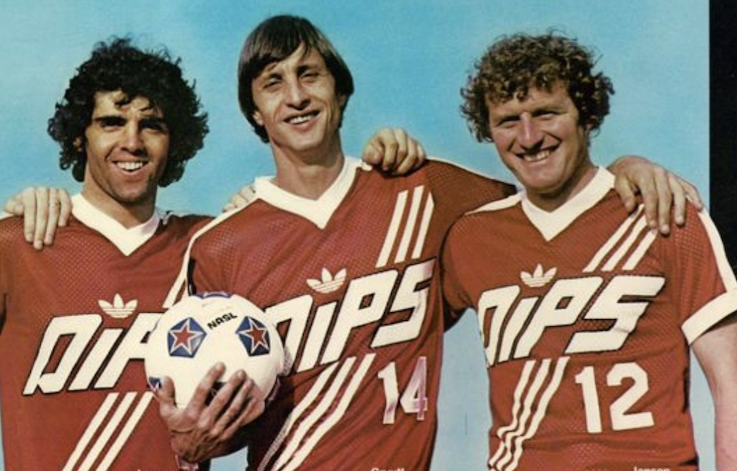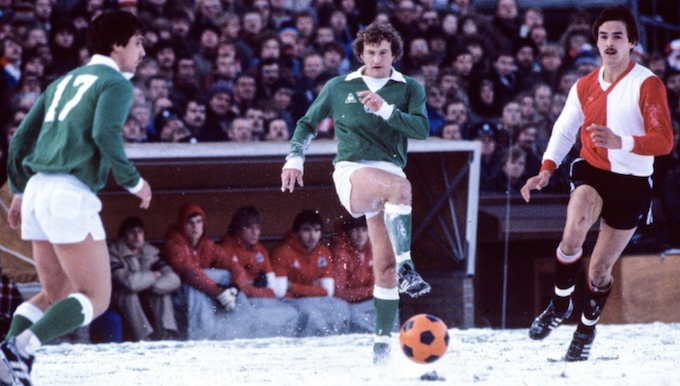We went into the 2nd match of the Van Gaal System Change process with optimism. We played well versus the Danes and this Germany would be a real test, Van Gaal thought.
There was a slight chance we would end up in Pot 1 for the World Cup draw: Holland needed to win over Germany and Portugal needed to lose their play off versus North Macedonia. Portugal won, Oranje drew. Pot 2 it is.
Van Gaal didn’t want to change too much, as he wanted to give this team another chance to gel. Only two changes: Malen for Bergwijn and Malacia for Ake (but Malacia as left wing back and Blind as left footed centre back).
Our main man
The thinking was probably that Bergwijn can’t play two matches in a row at full capacity? And the thinking was to test Blind as left centre back while giving Malacia a chance on the flank.
Nathan Ake is solid as centre back, so Van Gaal didn’t need further convincing from him.
He also felt that two full matches in 4 days would be too much for Ake and Bergwijn, who both lack rhythm.
I personally would have wanted to see Danjuma in place of Memphis and someone like Klaassen instead of Berghuis. I feel and felt that against Germany, we need more physical strength and running in midfield and we need less of the creativity Berghuis offers.
Van Gaal threatening red carding Blind
Time and space would be at a premium in this game.
It was clear from the start that Germany meant business and wanted to dominate the game. It seemed we were a tad too slow at times, a bit too hesitant and when in possession we were simply not solid enough in possession, wasteful with stray passes and way to hastily in execution.
It might be that Malen felt he is competing with Bergwijn and needed to score two goals as well, (as Bergwijn did versus Denmark) because every opportunity he got he pulled the trigger. From good position and not so good positions.
Memphis could not get into the game and he was hardly found and the German midfield bossed ours. Their forward pressure was strong and Oranje was not able to play out of it. The good thing is, Germany didn’t get a lot of opportunities and the Germany goal was given to them by a Dumfries mistake.
Only Frenkie seemed to be able to stay at a good level and he would end the game as Oranje’s best player.
From a system perspective, this match didn’t teach us much new. Any system is merely a schlystem when the execution is poor. And we played poor in the first half.
One of the strengths of our 5-3-2 (at the Euros) for instance, were Dumfries and his blistering stampedes on the right. We didn’t see it against Denmark and we didn’t see it versus Germany. The one time he did go, Frenkie spotted the run and Bergwijn’s 1-1 was the result.
The German goal was completely unnecessary but Holland snoozed off hoping for a half time break whistle. Frenkie allowed his man to go into the box, the cross wasn’t dealt with and two Oranje defenders didn’t want to put their bodies on the line to stop the Muller shot: 0-1.
I expected some changes at half time. I personally would have brought Danjuma for Memphis and De Roon for Koopmeiners. Wijnaldum was the man brought in and as much as I loved him throughout his career, I was not impressed with what I saw. He seems too slow, he hasn’t got the ability to see the one-time pass forward and with Gravenberch, Struijk, Joey Veerman and others knocking on the door, I fear for his Oranje career.
Heads go down after conceding
I am not sure why Danjuma didn’t get a look in. Maybe because Van Gaal is convinced of him in a 2 man attack (as he plays in a 4-4-2 for Villareal).
A good break by Holland resulted in a penalty decision by the ref. Memphis was ready to pull the trigger and Kehrer went for the ball but first took out Memphis legs. The VAR saw it differently and suggested ref Pawson to change his decision.
In the remaining 20 mins or so, Oranje had the best of the game, thanks to renewed energy via Klaassen and Bergwijn. Klaassen and De Ligt had chances to score but the ball simply didn’t want to go into the net, at both ends of the pitch. Another key but subtle switch by Van Gaal was to have Daley Blind move up a bit and cover the movement of Thomas Muller, in this way taking the edge off for Holland. This is also why Ake played left back, for Malacia, to allow Blind to play on Muller.
Blind’s forward pressure from the back gave Oranje more grip on that last stage of the game.
All in all, very useful matches for Van Gaal I am sure. The Oranje faithful in the stands will always sing and applaud their heroes, but it does seem realistic to say we are not there yet.
No penalty!
From all I have seen, I am bit concerned about Wijnaldum, Berghuis and Daley Blind. Is it a dip, or is this the best we can get.
Gakpo might be better suited for the 10 role. Bergwijn made an impression of course, but I think Danjuma could well be our key man moving forward.
Our midfield of Koopmeiners and Frenkie de Jong (with Klaassen or Gakpo or Berghuis as attacking mid) looks ok, but showed weakness versus Germany.
I don’t think De Roon will be our solution here, but Gravenberch or Donny van de Beek might well be.
Defensively, I can live with the choices, and of course I do count on De Vrij as well. Even with Daley Blind as 12th man, the back line is ok. Only Dumfries will need some solid competition on the right and for me, that needs to be Karsdorp.
Our goalkeeper issue will be sorted once Cillesen and Bijlow are back. Flekken is not a bad goalie but he still looks a bit out of place at times.
Frenkie was our guiding light again, everything that was good started with him, from playing out of the press or creating our equaliser.


